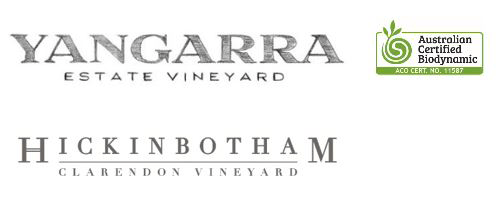2018 The Peake Cabernet Shiraz *
Named after the late Mr. Edward John Peake who established the first vineyard and orchard at Clarendon circa 1850. Blending Cabernet Sauvignon and Shiraz is a famous part of Australian winemaking history and whilst the individual components of this wine are mighty, the sum of the Peake’s parts is magnificent. The Cabernet shines aromatically with notes of blackberry, blueberry and dark chocolate and provides majestic, long tannin structure. Shiraz fills the mid-palate with red berry, blackberry and plum flavours and lightens and elevates the Cabernet just perfectly. Fine tannins, balanced acidity and an incredibly long finish are the hallmark characters of the vineyard that epitomise this, the estate’s flagship wine.
Block information:A blend of four distinct source blocks.Blocks 200s(35%) – 2.6-hectare contoured Cabernet planting from 1971. A relatively shallow soil, brown, yellowish-red silty light clay with greater than 50% siltstone fragments and a layer of subsoil with over 50% quartz fragments, all sitting over a bedrock of pale-yellow siltstone. Yield of 7.5-tonnes per hectare;Blocks 300s(20%) – 2.5-hectare contoured Cabernet planting from 1971. Moderate depth soil. Dark yellowish-brown light clay loam with 10-20% fragments of siltstone, overlying a pale yellow, layered siltstone, which is ferruginous in places (presence of ironstone). Yield of 6-tonnes per hectare;Blocks 200s(31%) – contoured Shiraz planting from 1971. Dark brown clay loam, overlaying a light grey, fine-grain layered bedrock. Yield of 8.5-tonnes per hectare;Blocks 300s(14%) – 2.9-hectare contoured Shiraz planting from 1971. Dark yellowish-brown loam with 10-50% fragments of Siltstone. Yield of 8-tonnes per hectare.
Winemaking: Shiraz blocks were hand-picked from 13th to 15th March, and Cabernet blocks were hand-picked on the 20th and 26th of March. The two varieties were both destemmed and fermented separately. Cold soaked for four days. During fermentation, skins on the Shiraz were plunged three times daily and Cabernet was pumped over daily. Both varieties were left on skins for a minimum of 18 days. After basket pressing, the light pressings of the Cabernet were included in the free run, and the heavier pressings were separated and not included in the blend. The Cabernet was racked and returned three times during maturation of 15 months in fine-grain Bordeaux coopered barrels. For Shiraz, a mixture of puncheons and barriques (Taransaud T5) were used. The wine remained on lees for 6-months, with subsequent rack and returns. The best Shiraz and Cabernet barrels were selected for this blend, and the final blending process occurred just prior to bottling. Bottled September 2019. Screw cap.
